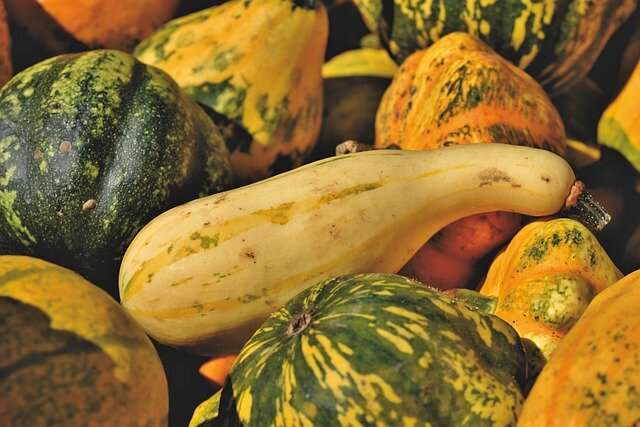Cover crops help squash to squash their pathogens

When most of us think about crops, we think of our favorite grains and produce such as corn, tomatoes, and squash. However, after these "cash crops" are harvested, many farmers are encouraged to avoid leaving their fields bare. Instead, they plant "cover crops" to reduce erosion and help the soil retain nutrients, among other benefits. While cover crops ultimately improve the yields of cash crops through improved soil health, new research suggests that they might also protect them from disease.
Pseudomonas syringae is a common bacterial pathogen that affects an array of important agricultural crops. Infections start on the leaf surface and spread through openings such as exposed wounds and pores. Farmers typically treat diseased plants with copper solutions, but some studies suggest that recruiting beneficial microbes may prevent P. syringae infection. Thus, creating reservoirs of helpful microbes in agricultural fields could be an important strategy for preventing disease.
In a paper recently published in the Phytobiomes Journal, Rémi Maglione, Marie Ciotola, Mélanie Cadieux, Vicky Toussaint, Martin Laforest, and Steven Kembel explored cover cropping as a potential tool for cultivating a healthier, disease-suppressive "phyllosphere," or aboveground plant microbiome. To do so, they grew P. syringae-inoculated squash in fields that were over-wintered under four different conditions: Winter rye cover crop, chemically-terminated winter rye cover crop, plastic cover, and bare soil. They compared the pathogen loads on the squash plants by culturing P. syringae from their leaves. The team also characterized the microbiomes of over 2,200 leaf samples to examine how cover cropping affects phyllosphere assembly. They found that cover cropping reduced populations of P. syringae and increased the abundance of genera such as Sphingomonas and Methylobacterium, which have been used as biocontrol agents against pathogens.
"To our knowledge, our study is the first to explore the importance of the phyllosphere microbiome in the context of cover cropping practices," states Dr. Laforest. "Our results suggest that cover cropping treatments can be used to manipulate biological interactions to protect plants against pathogens." Cover crops might not only promote a healthy microbiome by providing a reservoir of helpful microbes but could also minimize the colonization of soil-dwelling pathogens by creating a physical barrier. They could also affect microbial colonization by altering local soil conditions (e.g. soil moisture and temperature).
Many farmers currently plant cover crops to improve their soil quality, but perhaps the draw of disease-resistant crop microbiomes will encourage even more to adopt this practice. Although they might not get as much attention as our favorite foods, cover crops play important behind-the-scenes roles in supporting agricultural production. The next time you buy perfect squash at the market, you might wonder if their good health is due to the protection conferred by cover crop microbiomes.
More information: Rémi Maglione et al, Winter Rye Cover Cropping Changes Squash (Cucurbita pepo) Phyllosphere Microbiota and Reduces Pseudomonas syringae Symptoms, Phytobiomes Journal (2021). DOI: 10.1094/PBIOMES-04-21-0029-R
Provided by American Phytopathological Society




















